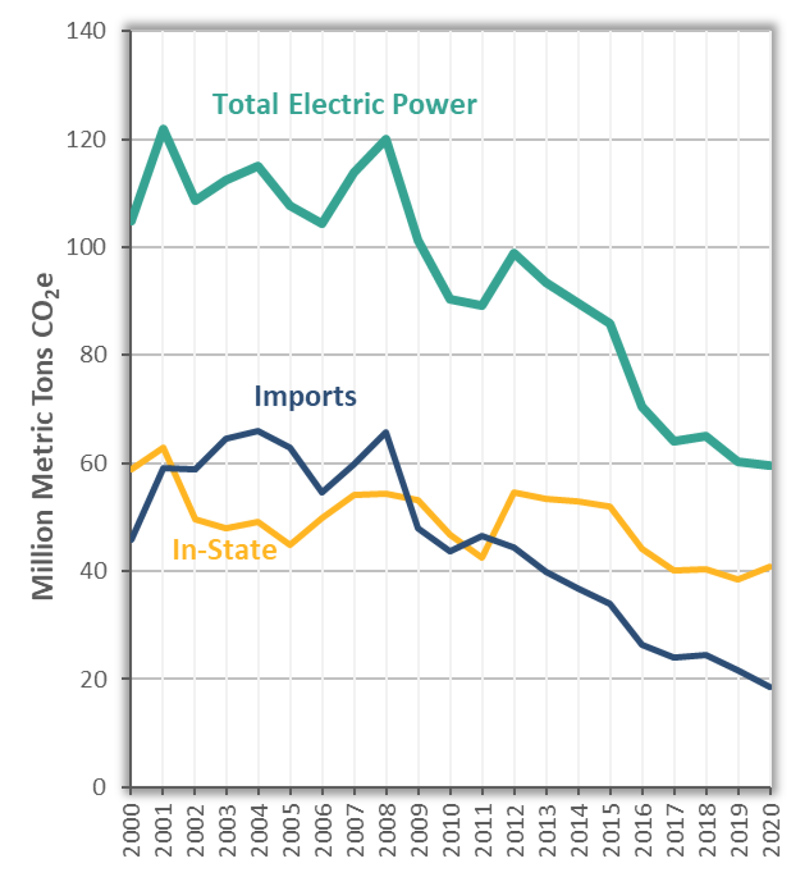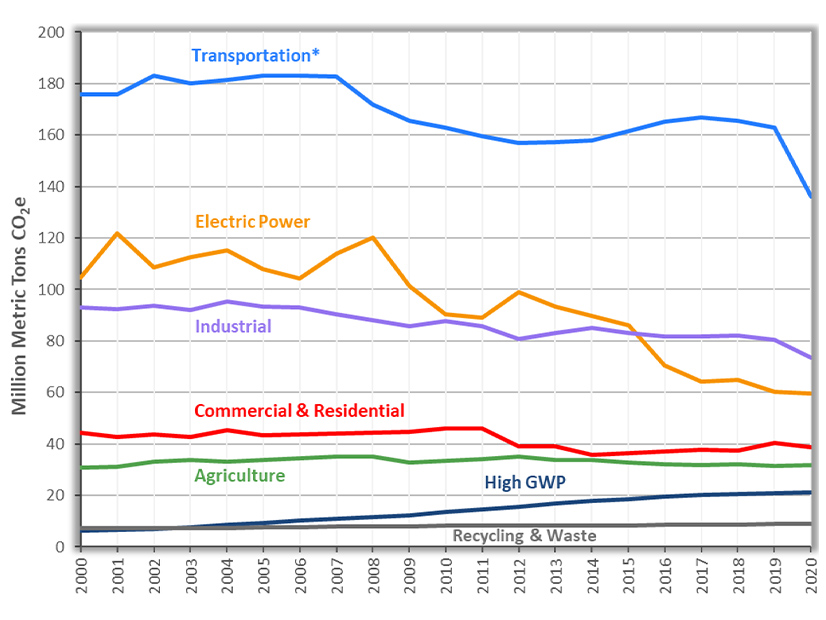California’s statewide greenhouse gas emissions dropped 8.7% in 2020, a “historic” decline that’s largely due to the impact of the COVID-19 pandemic, according to a new report.
The data are included in “California Greenhouse Gas Emissions for 2000 to 2020,” a greenhouse gas inventory released last week by the California Air Resources Board (CARB).
CARB said the drop in GHG emissions in 2020 was the largest percentage decrease in the more than two decades that the state has been tracking GHG emissions. Previously, the largest decline occurred between 2008 and 2009, when GHG emissions fell 6% during the Great Recession.
In 2019, the state’s GHG emissions fell 1.7%, following an increase of less than 1% in 2018. (See Calif. GHGs Decline 1.7% in 2019.)
The “historic plummet in emissions” in 2020 was due to the pandemic, according to CARB, which cautioned the public to view the results as an outlier.
“Economic recovery from the pandemic may result in emissions increases over the next few years,” CARB said in its report. “As such, the total 2020 reported emissions are likely an anomaly, and any near-term increases in annual emissions should be considered in the context of the pandemic.”
Transportation Emissions
California’s 2020 GHG emissions totaled 369.2 million metric tons (MMT) of CO2 equivalent (CO2e), 35.3 MMT less than 2019 levels.
When analyzed by sector, the largest decline was in transportation, which saw a 16% decrease in GHG emissions or a drop of 27 MMT of CO2e. Transportation remained the largest contributor to the state’s GHG inventory, accounting for 37% of the total.
CARB said the 16% decrease in transportation emissions was likely due to shelter-in-place orders issued in 2020 and an associated decrease in driving.
Other factors are the 18% growth during 2020 in the number of battery electric vehicles in the state and increases in fuel-efficiency of vehicles. In addition, heavy-duty trucks are using an increasing percentage of bio- and renewable diesel fuel, which accounted for 21% of diesel fuel sold in the state in 2020.
GHG emissions also decreased in the industrial sector, with a drop of 7 MMT of CO2e, or 9%. Decreased emissions from oil and gas production, as well as refining and hydrogen production, contributed to the sector’s results.
In the commercial and residential sector, GHG emissions fell by 1.7 MMT, which CARB attributed to a relatively warm winter and a slowdown in commercial activity due to the pandemic.
Electricity Sector
One sector that did not see a substantial drop in GHG emissions in 2020 was electricity, which remained near 2019 levels of about 60 MMT of CO2e. That’s 16% of the state’s total emissions.
 GHG emissions from California’s electricity sector. | CARB
GHG emissions from California’s electricity sector. | CARBEmissions from in-state generation increased in 2020, CARB said, as more natural gas was used to make up for reduced availability of hydropower. But emissions from electricity imported from outside of California fell in 2020, as the state continued a trend of importing a greater share of low-GHG electricity.
In another likely impact of the pandemic, the state’s gross domestic product (GDP) fell by about 2.8% during 2020. But GHG emissions per GDP unit decreased in California that year by 6.1%, which CARB said “demonstrat[es] the effectiveness of California’s long-term climate programs to decarbonize industry, energy and transportation.”
The state’s GHG emissions per capita also fell in 2020, dropping to 9.3 metric tons of CO2e per person compared to 13.1 metric tons per person in 2006.
California Assembly Bill 32 of 2006 set a target of reducing the state’s GHG emissions to 1990 levels by 2020. The state previously reported meeting that goal four years early, in 2016. GHG emissions in 1990 were 431 MMT.
But while preparing the latest edition of the GHG inventory, CARB discovered and corrected a “data discrepancy” that affected past years’ figures, the agency said. The revised data show that the state hit the AB 32 target in 2014 rather than 2016, according to CARB.
California still must meet a more stringent target set by Senate Bill 32 of 2016. The bill requires a reduction of GHG emissions to 40% below 1990 levels by 2030.
In addition, a draft climate change scoping plan that CARB released this year sets a statewide goal of carbon-neutrality by 2045. (See Critics Tear into CARB Draft Climate Change Plan.) The agency expects to finalize the plan by the end of the year.



